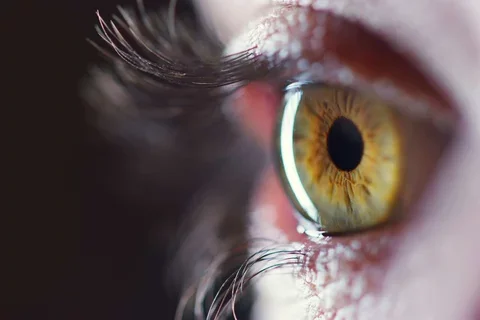What the eyes say about Alzheimer’s disease
New research could lead to earlier diagnosis through retinal exams.

Current diagnostic techniques for Alzheimer’s disease — including cognitive and functional assessments, brain imaging and neurological exams — are typically administered only once cognitive decline takes hold.
But one day, physicians may be able to diagnose the condition years before complications arise by examining the eyes.
New research confirms that proteins associated with Alzheimer’s disease are detectible in the eyes in quantities that correspond with the severity of cognitive impairment in deceased subjects. More amyloid protein in the retina was correlated with increased brain pathology.
While scientists have been interested in the relationship between the brain and the eyes for years, this is the first study to establish a quantitative connection between retinal proteins and Alzheimer’s disease at the tissue level, says UCLA Health ophthalmologist Simon Law, MD.
The new findings provide a deeper understanding of how the retina reacts to Alzheimer's disease processes, the researchers write, including "molecular, cellular, and structural abnormalities that can be detected in the earliest stages of functional impairment."
“The research is promising,” says Dr. Law. “But there are a lot of questions to be answered before it can be put into a clinically vetted application.”
The findings serve as a foundation for further research — into potential diagnostic exams to identify amyloid proteins in the retina, and how such exams might illuminate the trajectory of disease and ultimately inform possible interventions, Dr. Law says.
The clinical significance of retinal diagnosis still needs to be worked out, he says. For instance, if amyloid proteins are detected in the eye, does that mean the individual is certain to develop symptomatic Alzheimer’s disease?
Consider COVID-19, Dr. Law says: Not everyone who is infected with the virus has the same outcome.
Still, better understanding of the connection between the eyes and the brain is encouraging because “now we have something to make an earlier diagnosis or a map of the brain,” he says.
“People can study that and medication can be developed,” he says, “instead of just waiting to treat the end-stage type of disease.”
Original Article: "What the eyes say about Alzheimer’s disease"



